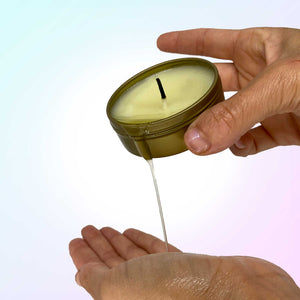Condoms are a highly effective method of contraception and protection against sexually transmitted infections (STIs) when used correctly. However, there are instances where condoms may fail to provide the desired level of protection.
Understanding the reasons behind condom failure is crucial for maximizing their effectiveness and maintaining sexual health. In this essential guide, let's explore the top 5 reasons why condoms fail.
1. Incorrect Use
One of the primary reasons for condom failure is incorrect use. Incorrect use of a condoms includes issues such as improper storage, using condoms past their expiration date, not checking for damage before use, not using enough lubrication, failure to leave space at the tip of the condom for semen collection, or not unrolling the condom all the way down the shaft.
Another common misuse is rolling the condom on the wrong way. Condoms in traditional foil wrappers don't come in easy-open, intuitive, always-right-side-up wrappers; so after tearing opening the wrapper with your teeth and fumbling in the dark to get the condom on (yourself or your partner), there's a good chance you've got it on backwards - and then believing that its ok to roll it on the right way (Don't. Go get a new condom).
2. Condom Damage
Condoms can become damaged during handling, storage, or use, leading to failure. Common causes of condom damage include exposure to sharp objects, such as fingernails or jewelry (or teeth), improper storage conditions (e.g., exposure to heat or friction, or carrying a condom in your wallet for too long), or using oil-based lubricants and balms (in the case of latex condoms). It's essential to inspect condoms for any signs of damage, such as tears, holes, or brittleness, before use to ensure their integrity.
3. Failure to Check for Air Bubbles
When putting on a condom, it's crucial to check for air bubbles at the tip of the condom. Failure to do so can result in the condom bursting during intercourse due to trapped air pressure. To prevent this, gently pinch the tip of the condom to remove any air before rolling it down the shaft. This ensures proper fit and reduces the risk of condom failure.
4. Latex Allergies
Latex allergies can also contribute to condom failure. Individuals with latex allergies may experience irritation, itching, or allergic reactions when using latex condoms, which can lead to discomfort or breakage during intercourse. To avoid this, consider using alternative condom materials such as polyurethane or polyisoprene, which are suitable for individuals with latex allergies.
5. Incorrect Sizing
Using condoms that are too small or too large can increase the risk of breakage or slippage during intercourse. Condoms that are too tight may feel constricting and are more likely to tear, while condoms that are too loose may slip off during intercourse, exposing individuals to the risk of pregnancy and STIs. It's essential to choose condoms that fit comfortably and securely, ensuring optimal protection and minimizing the risk of failure.
While condoms are a highly effective method of contraception and protection against STIs, they can fail under certain circumstances. Understanding the reasons behind condom failure is essential for maximizing their effectiveness and maintaining sexual health. By following proper condom use guidelines and taking preventive measures, individuals can reduce the risk of condom failure and enjoy safe and pleasurable sexual experiences.
More Articles You Might Love

Get To Know Your Vulva




















